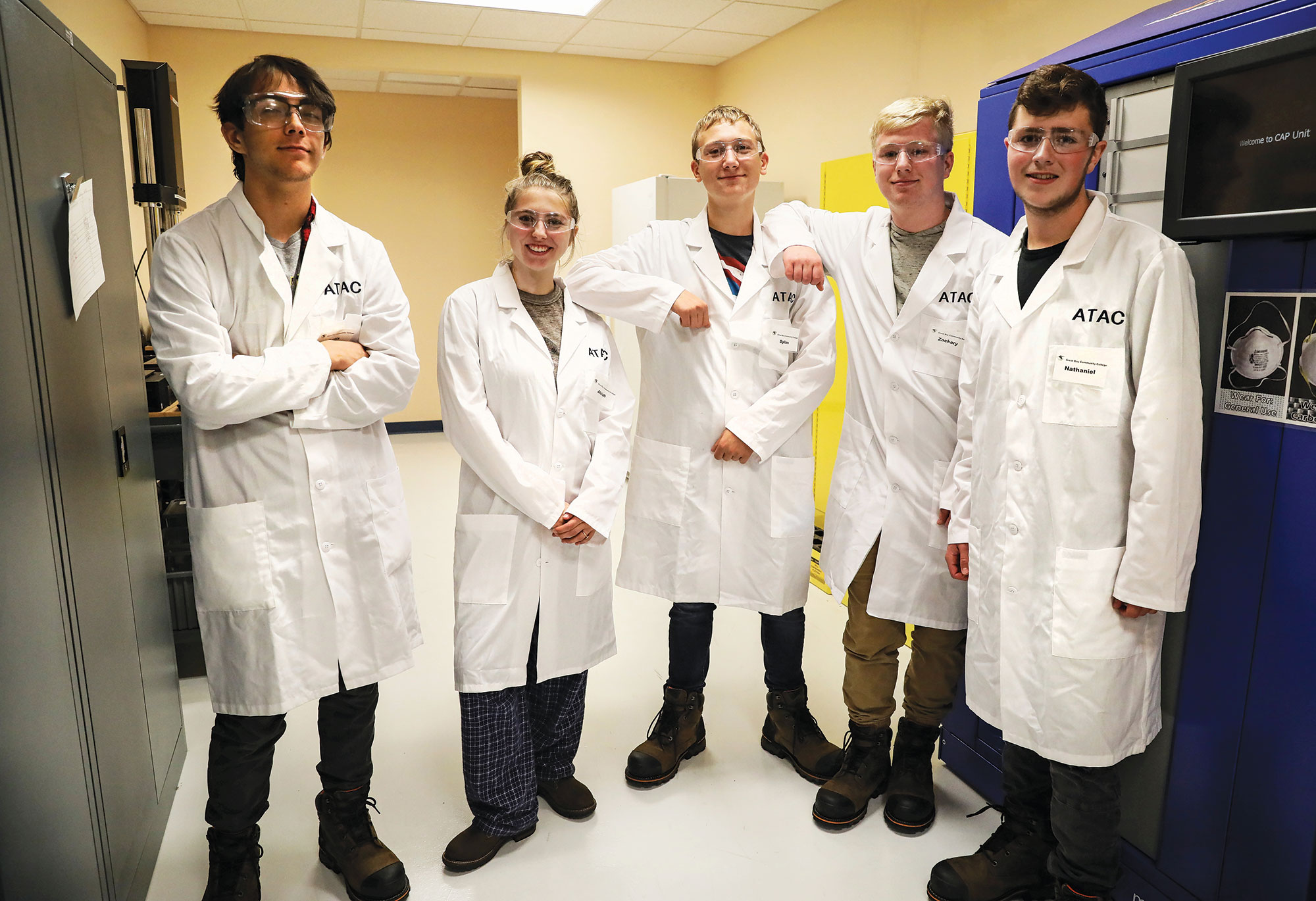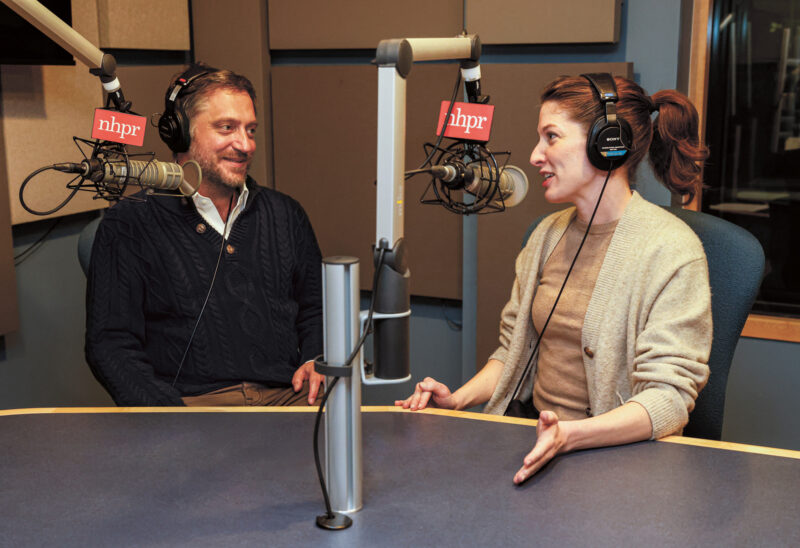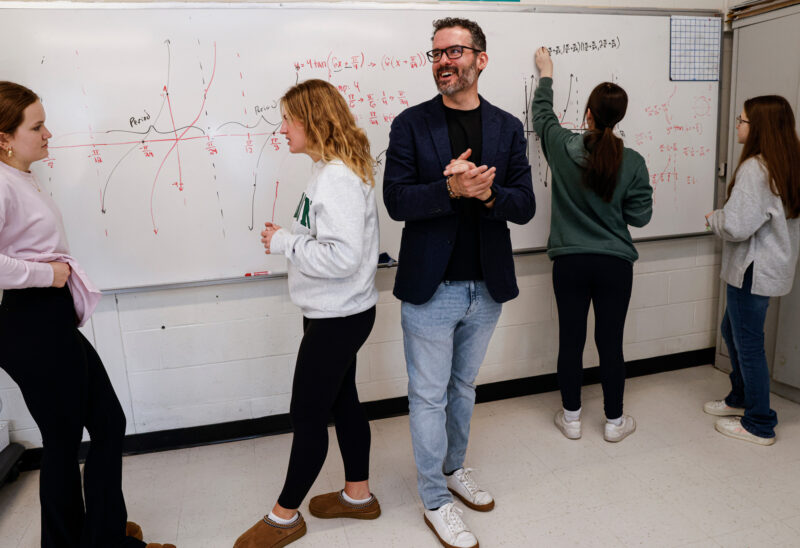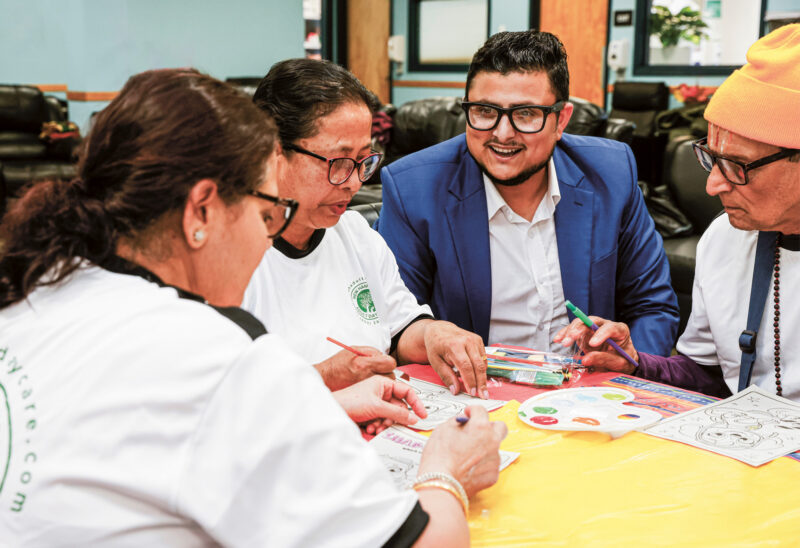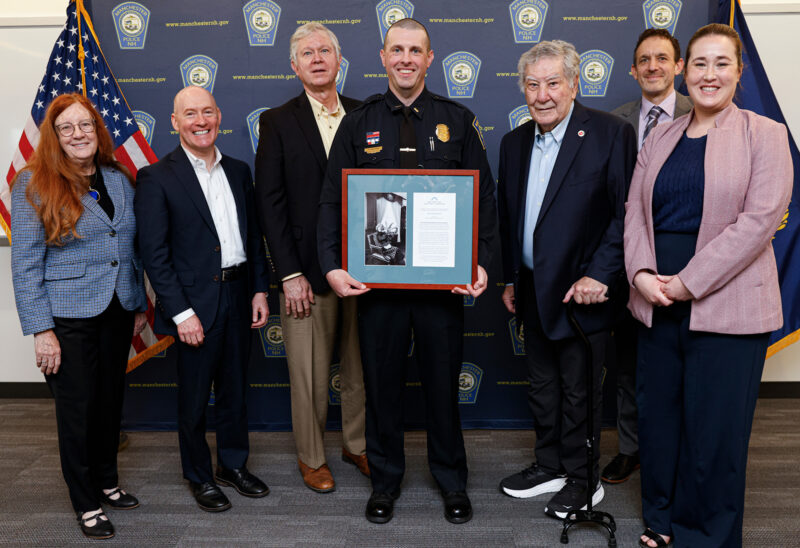Aleiah Douglas will graduate high school with her associate degree halfway finished and a certificate in advanced composites manufacturing. She will walk in her cap and gown on a Friday — and, on the following Monday, be able to step into a job making $19 an hour, with advancement opportunities and benefits — including tuition reimbursement to finish college.
Aleiah is one of 13 students in a pilot program in Rochester that gives young people the opportunity to train for careers in a high-demand field in New Hampshire — without running up any college debt.
The program is a partnership between Spaulding High School, Great Bay Community College and Safran Aerospace Composites — which has equipped a lab at GBCC and guaranteed each student a job interview. The curriculum includes significant lab time spent operating the same equipment that employees use at Safran. Students split their time between high school and college for their senior year. The program is free for participants.
No one in Aleiah’s family has ever been to college.
“It’s nice to be given this chance,” Aleiah said. She plans to start working right out of high school and eventually get her bachelor’s degree. “I can advance into anything I would like to be.”
The New Hampshire Charitable Foundation is supporting the program — including awarding scholarships to help cover tuition for each student — as part of broader efforts to increase opportunities for young people in need and to help build a strong future workforce to sustain New Hampshire’s economy and communities. The efforts are part of the Foundation’s “New Hampshire Tomorrow” initiative to increase opportunity for young people.
“This program is a great example of what can happen when schools, businesses and philanthropy collaborate,” said Katie Merrow, the Foundation’s vice president of community impact. “The fact that these students will have half their degree completed — with zero student debt — is huge, and will give them a great start in an industry that needs them, and where they can advance and build careers. We hope this will be a model for similar programs elsewhere.”
Goal: 65 by 25
The Foundation is working with partners from education, business and state government to ensure that 65 percent of New Hampshire adults have a degree or high-value professional certificate by 2025. Those partners asked the Foundation to help lead and coordinate efforts toward that goal, including building resources to help achieve it. In this role, the Foundation will continue to focus on providing access to education and training to people who face significant barriers to opportunity. Right now, 54 percent of adults in New Hampshire have a degree or high-value credential — up from 49 percent in 2007.
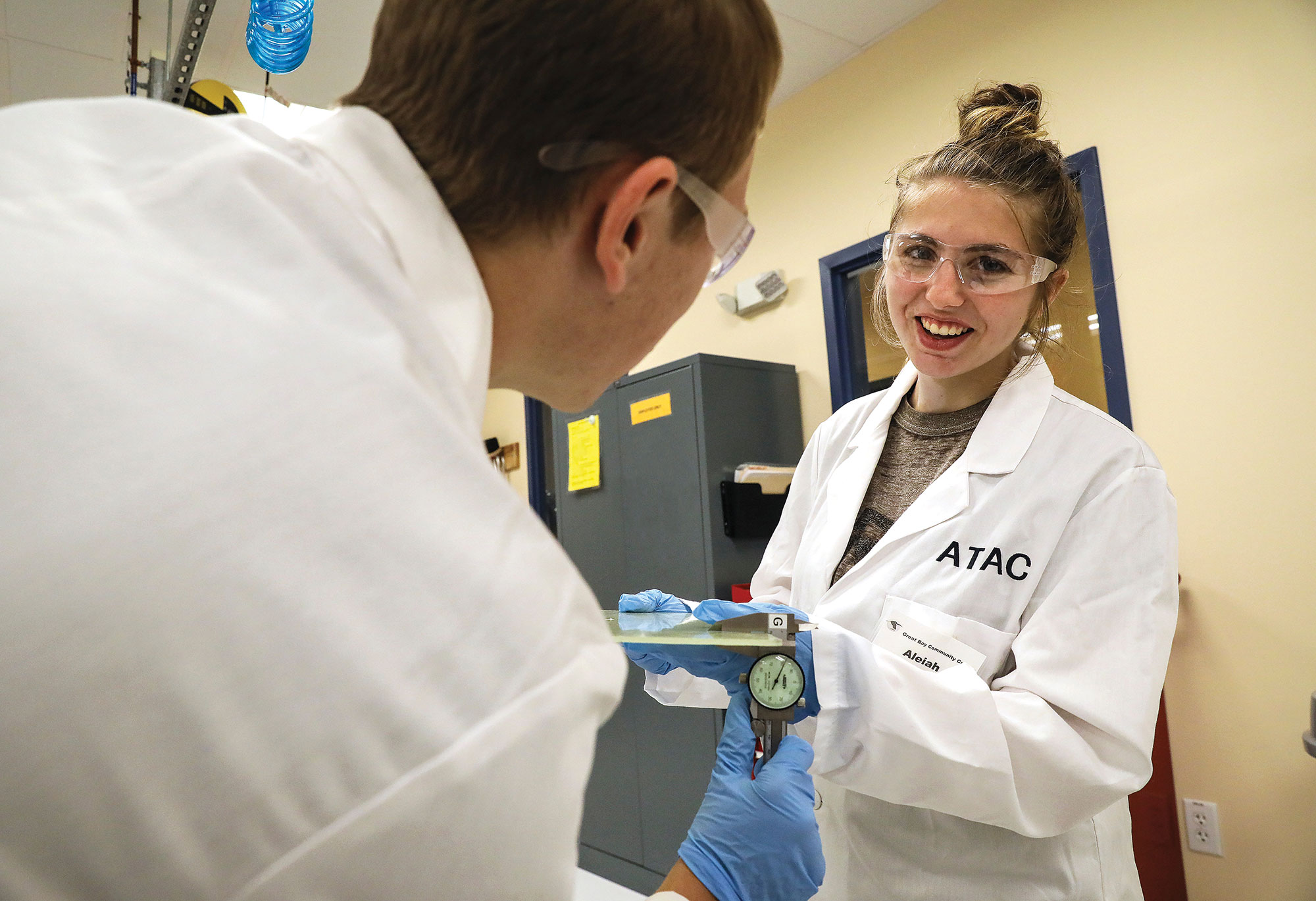
Michael Turmelle, the Foundation’s new director of education and career initiatives, is charged with advancing that work.
“The Foundation is excited to be working with so many dedicated partners to help New Hampshire reach 65 by 25, and to ensure that those who have not had access to opportunity are part of our workforce solutions,” Turmelle said.
The Foundation has also:
- Helped build new “pathways to work” — including supporting a new computer programming track in Portsmouth and funding other pathways efforts in Milford, Keene, Langdon and Gorham.
- Joined forces with the Business and Industry Association to launch the “Workforce Accelerator 2025,” an effort to support partnerships between New Hampshire’s schools and businesses to strengthen school-to-career pathways and advance 65 by 25.
- Tripled the amount of scholarship aid to students studying at New Hampshire’s community colleges, and committed to awarding a half-million a year in scholarships for the next four years to community college students.
- Partnered with the Eastern Bank Charitable Foundation to provide an additional $250,000 in scholarships to New Americans and other students in need for professional training, certificate and two-year degree programs. Those funds were matched with donations from other generous people and businesses.
- Created the Pathways 2025 Fund with an initial $250,000 for grants to advance leadership, collaboration and innovation to achieve 65 by 25 with an emphasis on increased equity and social mobility for young people and families.
A perfect demographic storm
Current demographic trends underscore the importance of these efforts: New Hampshire’s workforce is aging, with a large demographic bubble moving into retirement. New Hampshire is seeing a downward trend in the number of high school graduates — reflective of the overall downturn in population growth.
Declining enrollment numbers mean that K-12 schools are already feeling the pinch — particularly those in economically strapped and rural communities. As class sizes go down, costs per pupil for education go up, adding economic stress to communities and forcing some schools to cut programs and staff. Forty-eight percent of graduating high school seniors go to college out-of-state — and many do not return (the number is even higher for students going to four-year colleges — 60 percent of those students leave New Hampshire). Unemployment in the state is low, with jobs going unfilled in the advanced manufacturing, health care and high-tech sectors. And workforce housing is scarce — particularly on the Seacoast and in the Upper Valley.
This program is a great example of what can happen when schools, businesses and philanthropy collaborate.- Katie Merrow, vice president of community impactTweet This
“These individual problems have to be understood as part of a bigger issue,” Turmelle said. “Our efforts will be geared toward bringing the right folks to the table to discuss the larger picture and address the problem collaboratively.”
Projects like the one in Rochester, he said, are part of the solution — as is helping build infrastructure in schools so similar projects can be launched elsewhere.
A new sense of possibility
Dean Graziano, coordinator for Extended Learning Opportunities in Rochester schools, is a chief architect of the Rochester program. He worked with Safran, presented the idea to the school superintendent and board, beat the bushes for funding — and is a regular presence in his students’ school days.
“I wanted this more than life,” said the longtime educator who was named the state’s top ELO coordinator in 2017 (and who also holds a law degree). The students in this program have not had the same opportunities as many of their peers, and he sees this program as their chance. “Anyone can get the AP kids a job,” Graziano said, “What about these kids?”
The program is demanding: Students have to maintain passing marks in all of their college and high school courses, and cannot have more than two absences.
The program is already being studied with an eye to replicating it in other parts of the state.
Michael Lovely is also enrolled in the Rochester program. He remembers being homeless and sleeping under a bridge as a 7-year-old. He now lives with a guardian and plays varsity football in addition to juggling his full course load. He is a diligent note-taker in class, and at night, re-writes all of his notes — twice — to help retain the information.
“Everyone thought I was going to fail,” Lovely said, since some assumed he would follow his parents’ turbulent path. “Once this program is finished, there are so many opportunities that we are going to have. We are all going to help each other until everyone succeeds.”
For many of these kids, this program has provided a new sense of the possible.
“No one ever believed in them,” Graziano said. “Now they believe in themselves. Just give them a taste of success, and they will fly.”

